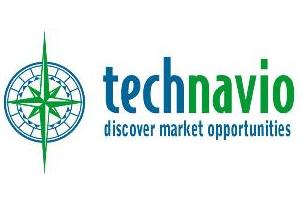The global telecardiology market is expected grow at a CAGR of over 17% during the period 2016-2020, according to Technavio’s latest report.
In this report, Technavio covers the market outlook and growth prospects of the global telecardiology market for 2016-2020. The market is further categorised into four product segments: software, hardware, telecom and IT services of which, IT services segment dominated the market with more than 50% of the overall market share in 2015.
“The global telecardiology market is growing at a significant rate due to rise in investments in cardiology informatics, connected devices, and mobile solutions for advanced cardiac care,” said Amit Sharma, a lead IT professional services research analyst from Technavio.
Technavio’s research study segments the global telecardiology market into the following regions:
- Americas
- EMEA
- APAC
Americas: largest telecardiology market
Cardiovascular diseases (CVDs) are one of the major causes of death in the Americas. One in four deaths in the Americas is caused due to heart and coronary heart disease. The aging population and growing medical cases related to pediatric heart diseases have led healthcare service providers to introduce innovative solutions for the treatment of CVD. North America is the leading adopter of telecardiology solutions for advanced patient care in the Americas. Brazil and Chile also account for significant investments in this market.
Teleconsultation services for the treatment of CVD help healthcare professionals share real-time images of heart tests, enabling key decision-making process. These services ensure that cardiology specialist services can be accessed quickly in case of complex heart diseases and during medical emergencies. Telecardiology is also useful in post-surgery patient follow ups to review heart conditions remotely.
Telecardiology service providers are investing in videoconferencing technology, connected cardiology devices, and wearable technologies. Advanced IT solutions, such as Internet of Things (IoT), cloud computing, and analytics, are playing an important role in providing a platform to connect doctors and patients.
Ask for a sample of this report: http://goo.gl/ofGd3P
EMEA: investment in ICT technologies to boost market growth
Rising incidence of heart diseases in Europe is compelling healthcare service providers to implement advanced telehealth services. IT solutions, such as cloud-based healthcare informatics integrated with enterprise systems of hospitals and specialty clinics, are increasing significantly.
Heart disease costs the European economy approximately USD 229 billion per year. In order to cut down on healthcare expenditure, service providers are investing in advanced medical technology such as virtual healthcare services. E-cardiology and e-health systems are being implemented in European hospitals to provide telecardiology services by connecting doctors and patient using a web-based platform.
The adoption of advanced patient care solutions is high in Germany, France, Spain, and Italy. Data privacy, regulations, investments, and medical reimbursements are some of the major barriers to the adoption of telecardiology services in Europe.
Remote healthcare services are increasing gradually in Europe and Africa as rural patients find it difficult to avail quality healthcare services due to lack of an adequate transportation service and high cost of healthcare services. Telecardiology services provide affordable consultation services for the treatment of heart-related problems.
Telecardiology centers also help deliver emergency consultation services for rural patients for immediate treatment of cardiac arrest. “The investment in ICT technologies, such as 4G LTE and ultra-fast fiber optics broadband solutions, is increasing so as to improve wireless networking services and Internet speed which will enable transmission of medical images and data,” said Amit.
APAC: development of affordable technology solutions to promote market growth
The telecardiology services market in APAC is emerging as the demand for it is increasing in rural areas. However, lack of adequate ICT infrastructure is a barrier in the adoption of telecardiology services in rural areas. Doctors providing services in local communities can consult senior cardiologists to treat complex heart diseases and refer patients to hospitals based on health information retrieved and analysed using IT solutions.
China, India, and Singapore are some of the leading countries that are investing in telecardiology technology for advanced cardiac care. Telecardiology service providers are using IoT technology to connect numerous smart medical devices. Use of m-health technology is also on the rise in most Asian countries. Heart patients in Singapore are using iPads and mobile applications to eliminate the need for repeated visit clinics.
Leading educational institutes, such as the Indian Institute of Technology (IIT) Hyderabad, India, are actively developing solutions to make the technology affordable, especially for telehealth solutions. IIT Hyderabad professors have developed systems to transmit ECG signals that require low bandwidth. Start-up firms are also attracting investors for the development of telecardiology devices.
Some of the top vendors in the global telecardiology market are:
- BioTelemetry
- Biotronik
- McKesson
- Philips Healthcare
- GE Healthcare
Browse Related Reports:
- Global Connected Health M2M Market 2015-2019
- Global Telehealth Market 2015-2019
- Connected Health M2M Market in the US 2015-2019
Comment on this article below or via Twitter: @IoTNow_ OR @jcIoTnow










